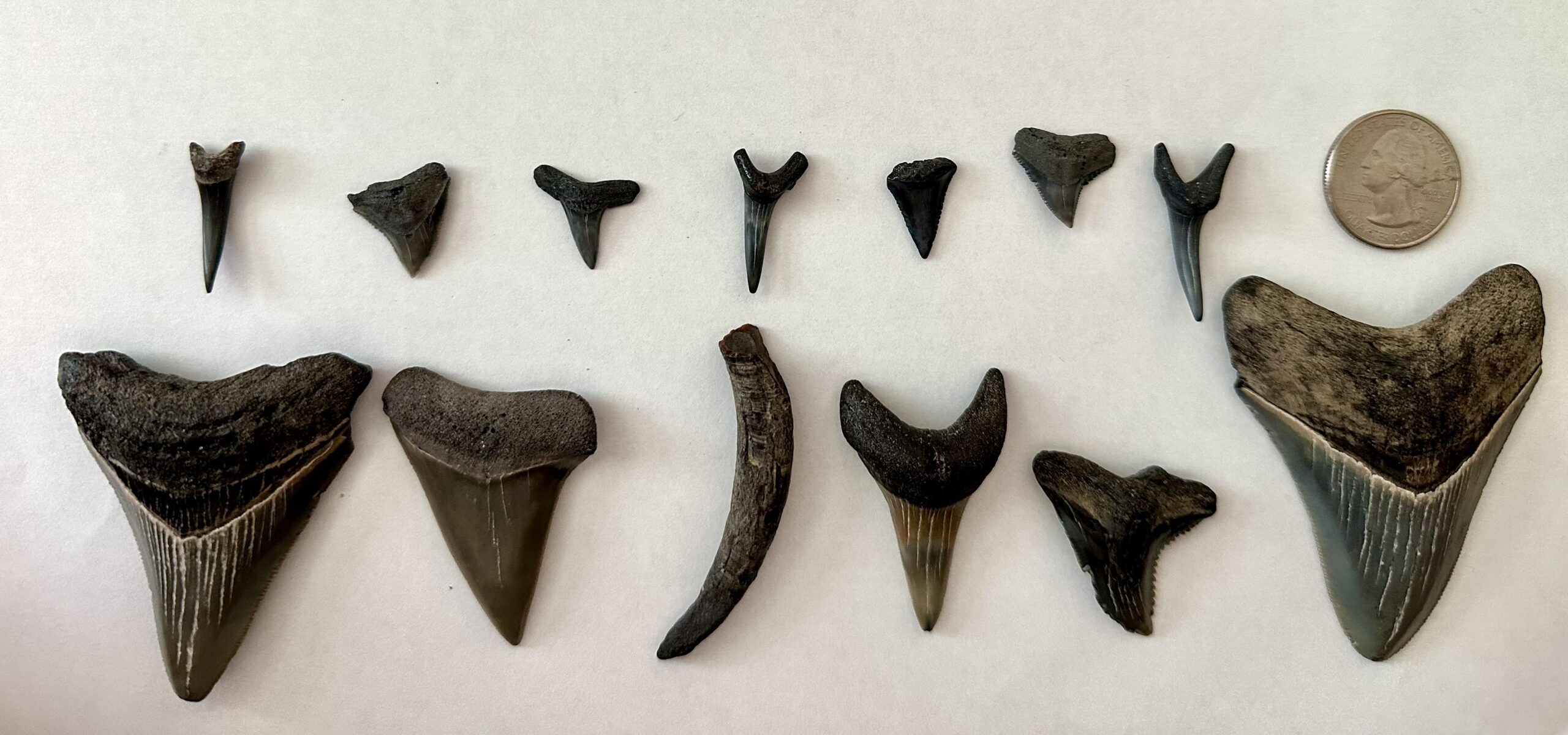The Amelia Island Whale Ambassadors might be quite focused on watching the waters in the hopes of spotting a whale during the North Atlantic right whale calving season, but occassionally we might also be looking down at the sand for shark teeth! Beautiful Amelia Island is not only the heart of the calving grounds for the North Atlantic right whale, but it is also a favorite spot to go shark tooth hunting! Fossilized shark teeth are often found on our beautiful beaches, but once in awhile someone will also find a whale tooth! This is an exciting find to be sure! But…. Are any of those teeth from the North Atlantic right whale that we hold so near and dear to our hearts?
Does the North Atlantic right whale have teeth?
The North Atlantic right whale can grow to be 52 feet long and 70 tons! So how does a whale that big fill up their belly? You might think they’d look for something big to eat, like a tasty mahi mahi or a grouper, but no… they actually eat tiny copepods. Copepods are small. Like, one to two millimeters small! So how does something so big even eat something so small?
The North Atlantic right whale has something called baleen in their mouths. These baleen plates are lined up in rows and are made of keratin, similar to a human’s hair or fingernails. These baleen plates are covered in a feathery, hairy fringe that creates a strainer. Baleen are attached to the upper jaw, about 225-250 plates on each side of its mouth. Each baleen plate can be up to 8 feet long!
As the North Atlantic right whale swims through the water, they open their mouth and water filters through, with the copepods and other zooplankton getting caught in the baleen. North Atlantic right whales can often be seen swimming slowly with their mouths open through areas with large amounts of copepods present. It’s estimated that they can eat between 2,200 and 5,500 pounds of copepods every day!
So to answer the original question, can that tooth I found on the beach be from a North Atlantic right whale, the answer is no… because North Atlantic right whales are part of the group of whales known as “baleen whales”.



Baleen Whales
Baleen whales are the group of whales that have baleen in their mouths to eat as described above. Some examples of the groups of whales that fall into this category are right, blue, humpback, bowhead, fin, and grey whales.
A few of the characteristics of baleen whales are that they migrate and are often found alone or in small groups. They don’t echolocate, but they do use sounds to communicate. Baleen whales have two blowholes on the top of their head, right next to each other. They are also some of the largest types of whales. Isn’t it wild that one of the biggest whales eats the smallest food?
So do any whales have teeth?
Yes! There is also a group of whales known as “toothed” whales. Dolphins, porpoises, sperm whales and killer whales fall into this category. Some whales can have up to 300 teeth and eat large prey like fish and marine mammals. Some of the toothed whales actually don’t have teeth that are visible as adults, but they are present beneath their gums. These whales are referred to as “beaked” whales but fall under the toothed category.
The unicorn of the sea, the narwhal, has one very long tooth, earning its comparison to the mythical creature. There are many more types of toothed whale than the baleen type.
One of the common characteristics of the toothed whales is that they are more social and travel in groups. It brings to mind an image of a group of killer whales working together to hunt seals.
Toothed whales use echolocation to find prey and “see” underwater. Some types of toothed whales will dive very deep to hunt prey. The sperm whale (the largest toothed whale, growing to 60 feet long) can dive to over 10,000 feet deep hunting giant squid!
Toothed whales have only one blowhole on the top of their head.



So, could I find fossilized whale teeth on Amelia Island?
Yes! Fossil finders and shark tooth hunters have been known to find an occasional whale tooth! Keep an eye on the sand when you take a break from trying to spot whales at sea, and you never know what might wash up!

Resources:
Check out some of these websites for even more information about the whales mentioned in this article!
https://www.nps.gov/redw/learn/nature/toothed-vs-baleen-whales.htm
https://us.whales.org/whales-dolphins/whales
https://www.thoughtco.com/baleen-vs-toothed-whales-3876141
http://rightwhales.neaq.org/2014/04/what-are-those-whales-doing-in-cape-cod.html
https://www.fisheries.noaa.gov/species/sperm-whale
https://www.fisheries.noaa.gov/species/narwhal
https://www.fisheries.noaa.gov/species/north-atlantic-right-whale
https://www.fisheries.noaa.gov/species/killer-whale

